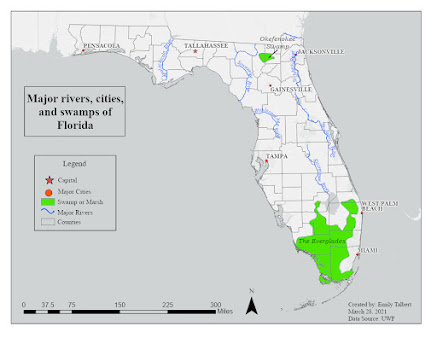Unsupervised and Supervised Classification

This module taught us how to conduct supervised and unsupervised classification in ERDAS Imagine. I conducted a supervised classification of Germantown, Maryland. The distance image is also included to display the areas that vary spectrally from the rest of the image. I created the supervised classification with the seed method. I selected the area I wanted to sample with the inquire cursor, then used the grow properties tool to create the sample polgyon. This sample was added to the spectral signature file. Once all of the image had signature samples, I classified the image. I also recoded the image to include the classifications listed above.

